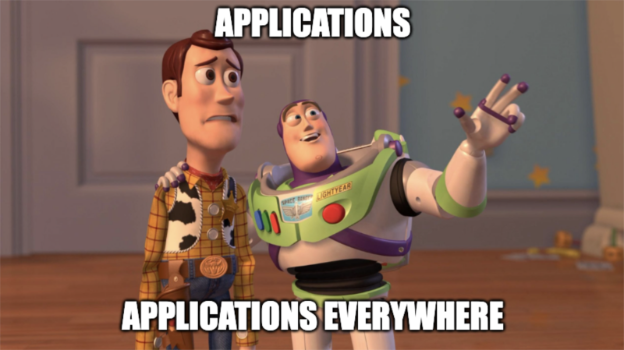
Software development has evolved dramatically over the last five years. Gone are the slow, predictable release cycles. Today’s applications are complex ecosystems of micro-services, containers, APIs, and now AI-generated code—all deployed at breakneck speed in dynamic cloud environments. But with this complexity comes a rapidly expanding attack surface.
The COVID Catalyst — and Its Security Debt
Then along came the pandemic—and everything changed. Development timelines collapsed virtually overnight as remote work forced teams to pivot fast, pushing out new digital services at hyper-speed. Even Microsoft’s CEO noted that companies experienced two years’ worth of digital transformation in just two months during early 2020 [1]. In other words, the pressure was on to digitize everything immediately.
The result? Organizations rushed to the cloud, broke monoliths into micro-services, and re-platformed legacy systems just to stay afloat. Cloud adoption surged, and multi-cloud architectures became the norm. But many teams took shortcuts on security, promising to “bolt it on later.” The result? Fragmented environments and misconfigured services left ripe for exploitation. Misconfigurations remain one of the leading causes of cloud security incidents [2]. Without continuous, always-active security, these environments were like the poor toys in Sid’s backyard—scattered, exposed, and constantly at risk.
Containerization: The New Toy
Containers are the hot new toy in tech—lightweight, portable, and built for speed. They’ve transformed how we build and ship software (container usage saw a huge uptick in 2020 as businesses scrambled to go online [3]), making deployments faster and more consistent than ever. But just like any shiny new gadget, containers come with their own set of risks. A single misconfiguration, outdated image, or insecure dependency can quietly turn your smooth launch into a full-blown security incident.
And this isn’t just a theoretical worry: one Red Hat survey found 94% of organizations had a Kubernetes or container security incident in the past year, with misconfigurations cited as a leading culprit [4]. Similarly, studies have shown over 85% of production container images contain critical or high-severity vulnerabilities [5]. With containers spinning up and down at hyper-speed, traditional tools can’t keep up. Without continuous visibility, it’s easy to miss the moment when things go from infinity… to incident.
What We're Solving For
Traditional AppSec tools often haven’t kept pace. Many still rely on point-in-time scans that drown teams in false positives while missing the real threats that emerge at runtime. Static analysis can generate mountains of noise, leading to alert fatigue and overlooked vulnerabilities. Worse, many exploits don’t appear until the application is actually running in production—if your tools only scan the code occasionally, they’ll never see those live threats coming.
Modern AppSec needs to be continuous, always-active, and integrated into the development lifecycle. It’s about runtime observability that follows your applications from development to production. Real-time visibility, API discovery, and anomaly detection let security teams see exactly what’s happening under the hood, detect issues as they emerge, and respond quickly—without slowing anyone down.
Security That Doesn’t Slow Down the Fun
In a world of rapid releases and CI/CD pipelines, slowing down isn’t an option. Security has to keep up with the velocity of development (and ideally even give it a boost). That’s why modern AppSec is built to be seamless and developer-friendly. Run Security integrates directly into your workflows, delivering:
- 🧠 Smart detection
- 🕵️ Real-time runtime analysis
- 🚀 Seamless collaboration between Dev and Sec teams
In short, security that moves at the speed of DevOps and doesn’t throw a wrench in the fun.
AI Enters the Chat
Now there’s another layer of complexity: AI-assisted development. Tools like GitHub Copilot and ChatGPT have quickly become essential in developer workflows, helping teams write code faster than ever. But they also introduce new risks. AI code generators often include outdated or insecure patterns. In some studies, nearly half of AI-generated code snippets contained security vulnerabilities [6].
There’s also the issue of hallucination—AI models can generate code that looks plausible but is functionally wrong or insecure. As a result, development teams must balance the productivity gains of AI with strong review processes and continuous security monitoring.
Final Thoughts: No Toy Left Behind
The future of software is cloud-native, containerized, AI-augmented, and constantly evolving. And in that world, only teams with always-active, runtime security will be ready for whatever risks lie ahead.
At Run Security, we believe in that future—where applications are secure, developers move at hyper-speed, and security teams can sleep soundly. We stick with your applications through every adventure, delivering always-active runtime protection from first deploy to full-throttle production.
Because in this race to infinity and beyond, your applications deserve to get there safely.
→ Ready to see Run Security action? Request a demo today.
References
- Satya Nadella. Microsoft Earnings Call Commentary on COVID-19 Accelerating Digital Transformation, April 2020.
- Check Point Software. 2023 Cloud Security Report: Misconfigurations Still the Top Cause of Incidents, 2023.
- QED42. The Rise of Containerization: Why 2020 Was a Breakout Year, 2020.
- Red Hat. 2023 State of Kubernetes Security Report, 2023.
- Sysdig. 2023 Cloud-Native Security and Usage Report, 2023.
- Stanford University and NYU. An Empirical Cybersecurity Evaluation of GitHub Copilot’s Code Suggestions, 2022.









